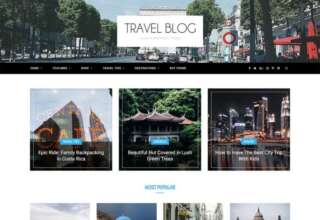
It was about 8 pm, and a cacophany of chirping birds and cicadas filled the inky darkness. If a large animal—a tapir, perhaps, or a jaguar—snapped branches or scampered through the bush, it would have been hard to hear it. My ears strained, my pulse quickened, as I surveyed the dense jungle ahead with a flashlight, waiting to spy a flash of green eyes…
Not many visitors make it to this part of northeastern Argentina, despite its Urugua-í Provincial Park being just a 2.5-hour drive from Iguazu Falls, one of the world’s largest waterfalls and certainly one of the most breathtaking. It even had a recent cameo in Black Panther. The Brazilian side of the falls is more popular and claims several things the Argentinian side lacks: notably, good roads, luxury hotels, and helicopter tours. But Misiones, one of Argentina’s 23 provinces, is full of untapped adventures beyond the Unesco World Heritage site.
Subscribing to a safari model, the four-month old Awasi Iguazú now offers a viable way in for high-class explorers. It pairs luxurious rooms—which feel like mashups of log cabins and Tribeca lofts, complete with private plunge pools—with guided access to under-visited terrain. Each two-person villa is assigned a personal naturalist guide and a four-wheel-drive pickup truck that facilitates hikes to old Jesuit ruins and visits with Guaraní tribes.

Awasi is justly famed for its other South American properties—standard setters when it comes to eco-sensitive, six-star adventure lodges that pair off-the-beaten-path adventures with engaging design and culinary might. Its first property opened in Chile’s Atacama Desert in 2007; six years later, it added an outpost in Patagonia. Each has won enough awards to fill entire bookshelves, including nods from Condé Nast Traveler and luxury-travel outfitter Andrew Harper.
Eco-friendly lodging such as Awasi’s is hard to find at Iguazu, and the resort’s opening couldn’t have come at a better time. The falls are seeing record visitation—an all-time-high of 1.4 million in 2017 on the Argentine side alone—putting pressure on the already strained town of Puerto Iguazu to meet increased plane and road traffic. Couple that with deforestation, a real concern across the Atlantic rainforest that stretches from northeastern Brazil into Argentina and Paraguay. With increasingly tropical weather, the area needs trees to help prevent erosion; the clear waters feeding Iguazu are already turning a muddy, brick-red from soil run-off.
Demand for sustainably built and run lodging exists, and its supply will be critical to maintaining this pristine ecosystem. At the Iguazu resort, the 14 villas are built on stilts to limit their environmental impact, and meals are indulgent multi-course affairs with regional ingredients. During my visit, dishes included surubi, a local freshwater fish prepared with heart of palm and brocolli puree, and farofa, a cousin to the piranha that gets matched with mushrooms, parsley foam, and an Argentine chardonnay. And they kept the fresh watermelon juice free flowing, even though it was an off-menu request.
The Experience
Arrival to Awasi comes via Puerto Iguazu airport, currently in expansion mode, where I landed four days after a cruise to Antarctica. (Most people fly via Buenos Aires, less than two hours away.) Guests are picked up not by a hotel driver but by their own guide, decked out in a safari uniform of ripstop and dryfit khaki. From there, it’s about a 30-minute drive through Iguazu National Park to the private reserve in which the resort is set.
As soon as I was settled in, Nahuel Alonso, my guide, presented me with options to fill my three-night stay, pointing out hikes and boat rides on regional and national maps. The farthest excursion, he told me, sends guests to Jesuit missionary ruins in the southwest part of the province—it’s a 10-hour round trip, of which six are spent on the road. I opted to stay a bit closer to camp.
One of Awasi’s greatest luxuries is its enormous flexibility: Unlike most safari and adventure lodges that group guests into Jeep-style vehicles for tightly scheduled drives and activities, Awasi lets you start and end your day whenever you choose. Oversleeping is no issue; nor is cancelling all the day’s activities to lounge on your villa’s oversized, nap-inducing couch.
Laziness wasn’t on the docket my first full day. We arrived at the falls right as the park opened at 8 a.m., and were welcomed by flocks of multi-coloured butterflies and rainbows at seemingly every turn.
What nobody ever tells you about Iguazu Falls is how many ways there are to take it in. Travellers can easily spend three or four days here without seeing anything else. Alonso led the way through the jungle, toward an uncrowded network of metal lattice bridges. The trails offered a sense of the falls’ expansiveness, offering lookouts onto the various points where the Iguazu River splits off into about 270 separate cascades.
Eventually the sound of rushing water intensified, and a swarm of prehistoric-looking vultures appeared overhead. We’d made it to a viewpoint of Devil’s Throat, the park’s main attraction: a 269-foot-high, 492-foot-wide torrent that funnels thunderously into the river below. For all its strength, I thought, its mist looked as soft as cotton candy—a surprising contrast. And while I did have to dodge a few selfie sticks, the crowd thinned as the park’s closing time approached. As a result, I enjoyed the natural marvel in near-privacy, standing for an hour in a kind of meditative trance, watching the river crash onto itself over and over.
Alonso and I passed the time talking about everything from climate change—a downer—to our shared love of nature and rock music; on the ride back, as our vehicle cut a path through flocks of butterflies, we broke into an impromptu rendition of Queen’s Bohemian Rhapsody.
Iguazu was—and should be—the highlight of any trip here; there’s a reason it’s considered one of the “new” seven wonders of the natural world. But with the help of savvy, crowd-averse guides such as Alonso, it’s possible to capture Iguazu’s full glory in one day, rather than over a few, leaving time to contextualize the site against its fascinating backdrop.
The next day, we spent two and a half hours winding down ruddy, bumpy backroads that led to a hiking path in Urugua-í Provincial Park. The lush trail looked all but abandoned—it was being overtaken by vines and other growth—and while there were no humans to be found, the area is known to be rife with wildlife. Everything from toucans to ocelots call the Urugua-í home, but it wasn’t listed in my guidebooks. (The entire park has all of four TripAdvisor reviews.)
Eventually, the path led to a staggering feat of natural architecture: a series of bamboo canopies. They look almost manicured but occur organically when the plants become to tall to stand straight. Even for an experienced adventure traveller (Antarctica, Kilimanjaro, and Borneo have all been checked on my bucket list), this was a sight to behold. It felt simultaneously like an Indiana Jones discovery and a time warp into the Jurassic Period. Seeing it alone triggered a heightened sense of awe—the sensation of getting lost in an unfamiliar place, even with the security of a guide. No destination with thousands of Instagram photos can deliver that.
The trail led to a river that was gently flowing over rocky steps. Alonso and I stopped for a rest and a quick snack—homemade brownies and assorted pastries with maté tea—before making our way to an elevated perch from which we’d watch the sunset and open our ears for prowling jaguars. No wild cats ended up joining us that night, but it was far from a disappointment.
My last day at Awasi was set to be a wash; I needed to be at the airport by early afternoon. But Alonso indulged me with one last adventure: a motor boat ride through a nearby park, culminating at a waterfall significantly smaller than Iguazu. This time, we stood right at its base, with not a soul nearby, getting sprayed in the mist and drinking a local blend of maté and juice called tereré. Butteflies tried to get a lick of the juice, which set me off in a fit of giggles. I’d been worried about the time, but by then I should have known that the Awasi crew had it all figured out: I was back at the lodge in time for a three-course lunch—and later, past security at the airport with time to spare.
Rates at Awasi Iguazú start at $2,100 per person, double occupancy, for three nights and are inclusive of meals, drinks, and all excursions.
[“source=hindustantimes”]
















